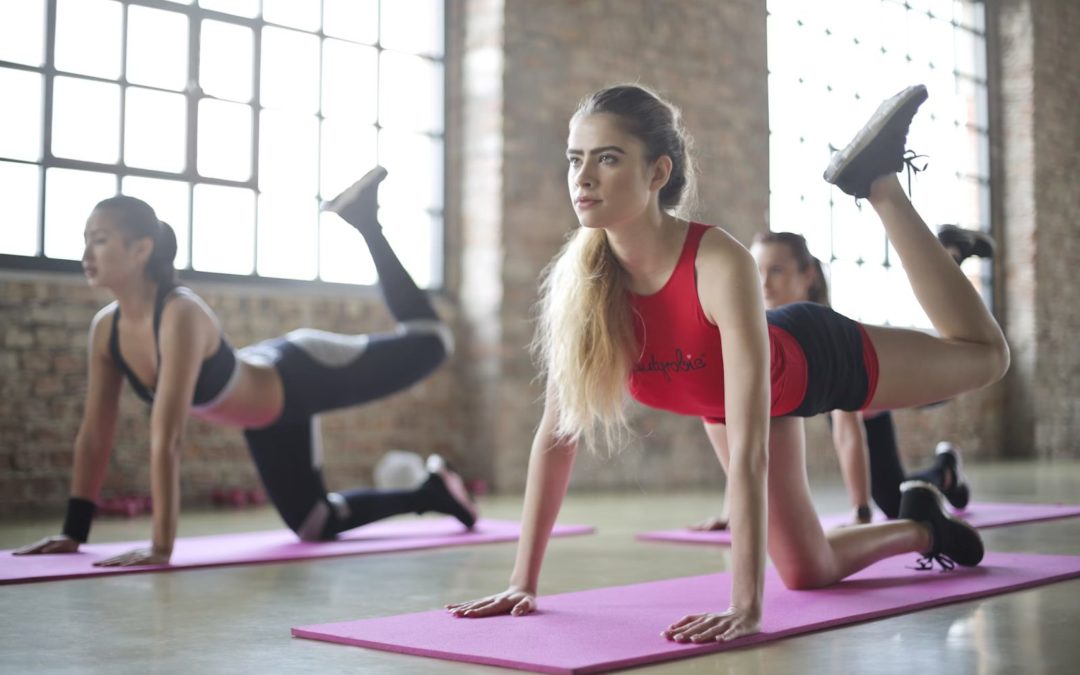From your first pair of running shoes to your daily protein shake, starting a fitness journey is an exciting time, especially if you could be doing more with your free time. However, fitness journeys can be as intimidating as they are exciting. Many people feel self-conscious about hitting the gym or running around the neighborhood when they feel out of shape, and even if they go once, developing a habit that sticks is a whole other challenge.
But this shouldn’t mean you can’t get into better shape and develop fitness habits and routines that benefit you. While you may have tried before but never established something concrete, here is some advice to help you develop a fitness habit you can rely on.
Know Your Goals
There’s no point embarking on a fitness journey if you don’t know your goals. Thankfully, fighting your goals out is simple. Do you want to lose weight? Become stronger? Faster? Do you simply want to be healthier? Understanding why you go to the gym or explore exercise options can help you find an activity that will be most effective. Although all workouts can generally provide the same results, specific exercises provide more focused improvements, so consider these when you’re determining your next move.
Find Your Fitness Level
You might be more capable than you think you are, which is why an at-home fitness test is such a useful approach to establishing the best fitness habits. If you have any previous experience exercising, lifting weights, or running, you might have a better base level than someone who hasn’t.
On the other hand, you could overestimate your ability, which can increase the chances of overdoing it and suffering an injury. Taking a fitness test before your first session should help you identify where you’re at so you can approach your routine safely.
Try Workouts That Work For You
As much as you may want to do everything you can to get into shape, there will be some activities you simply don’t enjoy. If this is the case, you shouldn’t force yourself to do them because you should still be having fun during your activities and workouts.
Instead, look for alternative workouts that focus on the same muscle groups or areas. This way, you can find an activity that you enjoy without neglecting important body parts to ensure a well-rounded routine.
Workout With Other People
Visiting the gym for the first time is one of the most intimidating things you can do. The same goes for going for a run or doing any other activity, especially if you’re not confident in your abilities. Furthermore, this lack of confidence means you may be less willing to maintain a routine, which affects your progress.
Searching for exercise classes near me can highlight local groups full of people in the same position as you. The results should show you a range of classes designed for all levels, allowing you to find something that fits.
But of course, exercise classes aren’t for everyone (and they can be incredibly intimidating too). But if you’re someone who’s certain could work out with a friend, partner, or whoever else, well, you could look into a gym with joint membership for both of you to share. You save money, can work out together, and you’re still keeping that motivation.
Start Slowly
Getting hurt in your first session is the last thing you want, especially as it could take weeks or months for you to recover. Since you want to prevent injury, it’s best to start slowly and take it one day at a time. You don’t need to achieve your personal best on the first attempt, whether lifting or running time. Instead, ease yourself into your new routine to build a solid base. Once you’re comfortable with that, you can start looking at how to progress.
Make Time
The biggest obstacle in your fitness journey can often be making time. If you don’t carve out half an hour every day, you won’t get into the groove and see the results you want. However, many people are busy. They often don’t have a moment to spare, so you’ll need to adjust your routine to squeeze your workout in. Try getting up early or focusing on small sessions, such as a 15-minute yoga program, that you can do at home or during your lunch break to help you stay on track.
Don’t Compare Yourself
Many people struggle to build their confidence because they compare themselves to other people continuously. They finish a 5K and, for a moment, are proud of themselves. That is until they see someone else making a much faster time. This attitude is the wrong approach, and you should only compare your run times to yourself. You don’t even need to be faster every day. Building up to tackle new best times involves easier runs that improve conditioning, so focus on these before you try to best yourself.
Measure Results
Conversely, you will never know how well you’re doing if you don’t measure results. Many apps and products make tracking your progress much easier. While it might not feel like you’re making much progress at first, you can check your previous sessions to see how far you’ve come. Eventually, you’ll see clear improvements that will motivate you to push on.
Adjust Your Diet
You can’t outwork a bad diet, so changing what you eat can help you get past those barriers that, currently, seem impossible to overcome. Eat more fruits and vegetables rather than snacking on candy. Drink more water than you do sodas. You should also try to get more sleep to ensure you have plenty of energy to tackle the toughest tests you want to put yourself through.
Know When to Progress
While you might have a goal weight or time in mind, you should still be prepared to progress. Just because you’ve made it shouldn’t mean you abandon your fitness routine. Now you need to maintain it. If you find your old routine isn’t challenging you, it’s a sign you should progress by running further or faster, lifting heavier weights, or trying more advanced fitness classes.
Sticking
You won’t love working out immediately. You’ll be sore and unsure whether your activities are making any difference. Sticking with it is important because things will never get easier otherwise. Eventually, you’ll have developed a habit that feels latent. You go to the gym after work. You run your distance or lift your weights, and you can see the results that remind you it’s all worth it.










